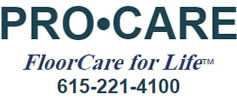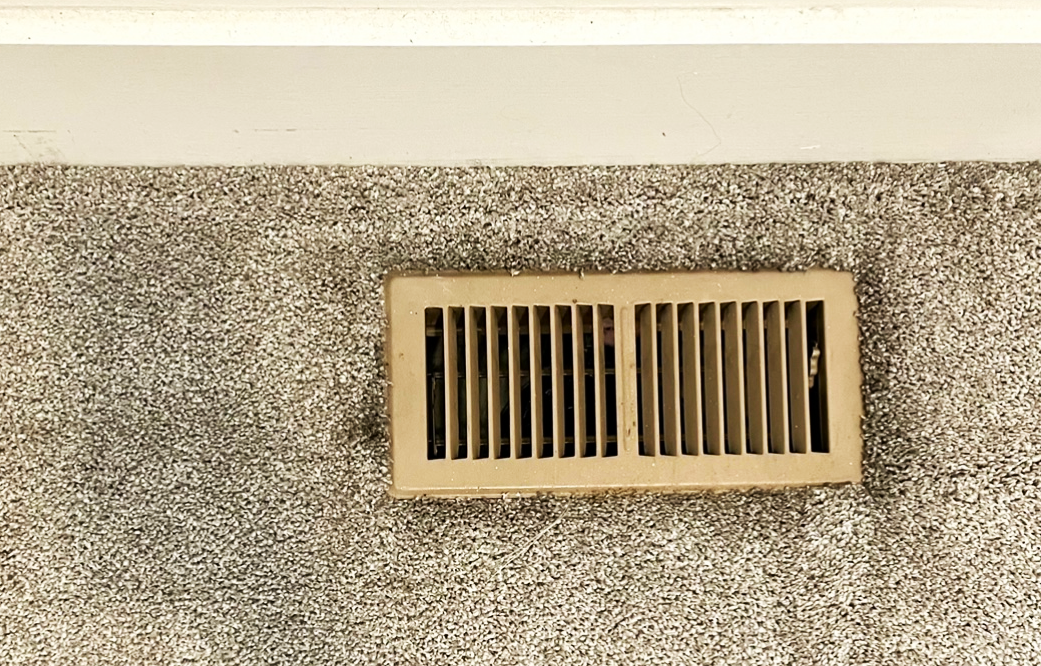Have you noticed a greying of your carpet along the edges of your rooms? Does your light-colored carpet show dark lines along the baseboards, under doors, around air vents, or at the joints on your stairs? If you answered yes to any of these questions, your home likely has a “case” of filtration soiling.
What is Filtration Soiling?
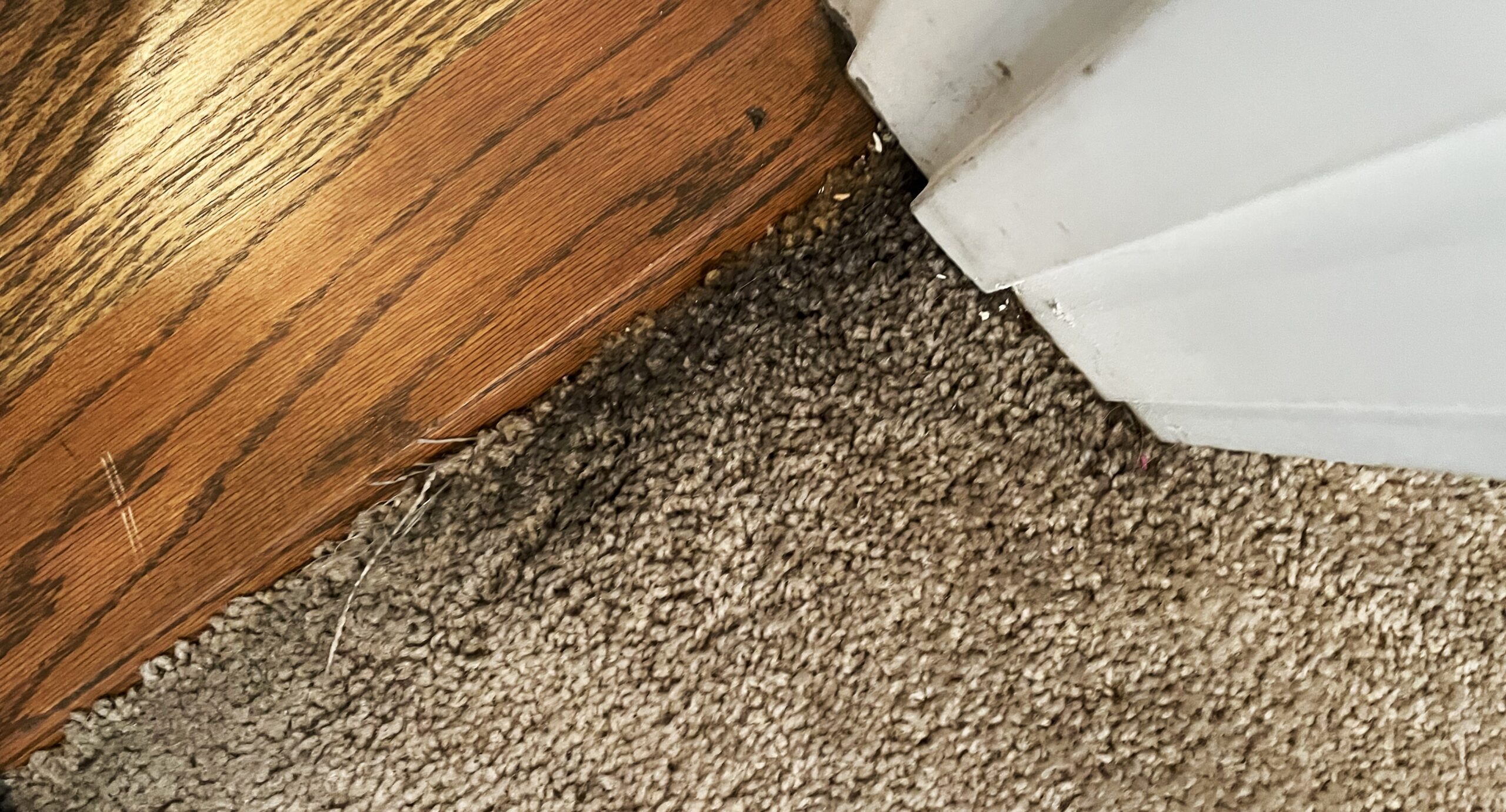
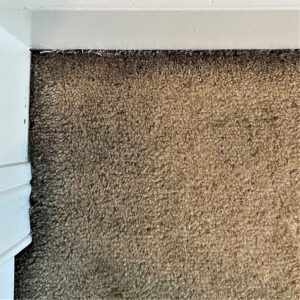 Filtration Soiling is a condition that affects residential carpet and generally takes years to accumulate. It occurs when air flows into an area (a room, for example) at a faster rate than it can escape via the ventilation system. The air then seeks alternative escape routes, like the gap between the carpet edge and the baseboard or the space between the carpet fibers and the bottom of a closed door.
Filtration Soiling is a condition that affects residential carpet and generally takes years to accumulate. It occurs when air flows into an area (a room, for example) at a faster rate than it can escape via the ventilation system. The air then seeks alternative escape routes, like the gap between the carpet edge and the baseboard or the space between the carpet fibers and the bottom of a closed door.
Air alone is not so much the issue. But as that air travels through your home, it picks up and carries microscopic particles of dust, dirt, dander, fireplace ash, cooking oils and smoke from candles or cigarettes. When that air is forced through the crevices and gaps common to most construction, it also passes through the carpet pile, which filters out these pollutants. After months and years of filtering that polluted air, the carpet retains enough of these microscopic soil particles that they become visible as those tell-tale grey seams and patches.
Filtration soiling is difficult to remove because the soil particles are so fine that they penetrate deep into the carpet pile, sometimes into the backing of the carpet.
How To Spot Filtration Soiling
Look for gray or black lines where your walls meet your carpet. Inspect places where carpet runs under doors, in the crevices on your carpeted stairway, around registers in your floor and other airflow zones.
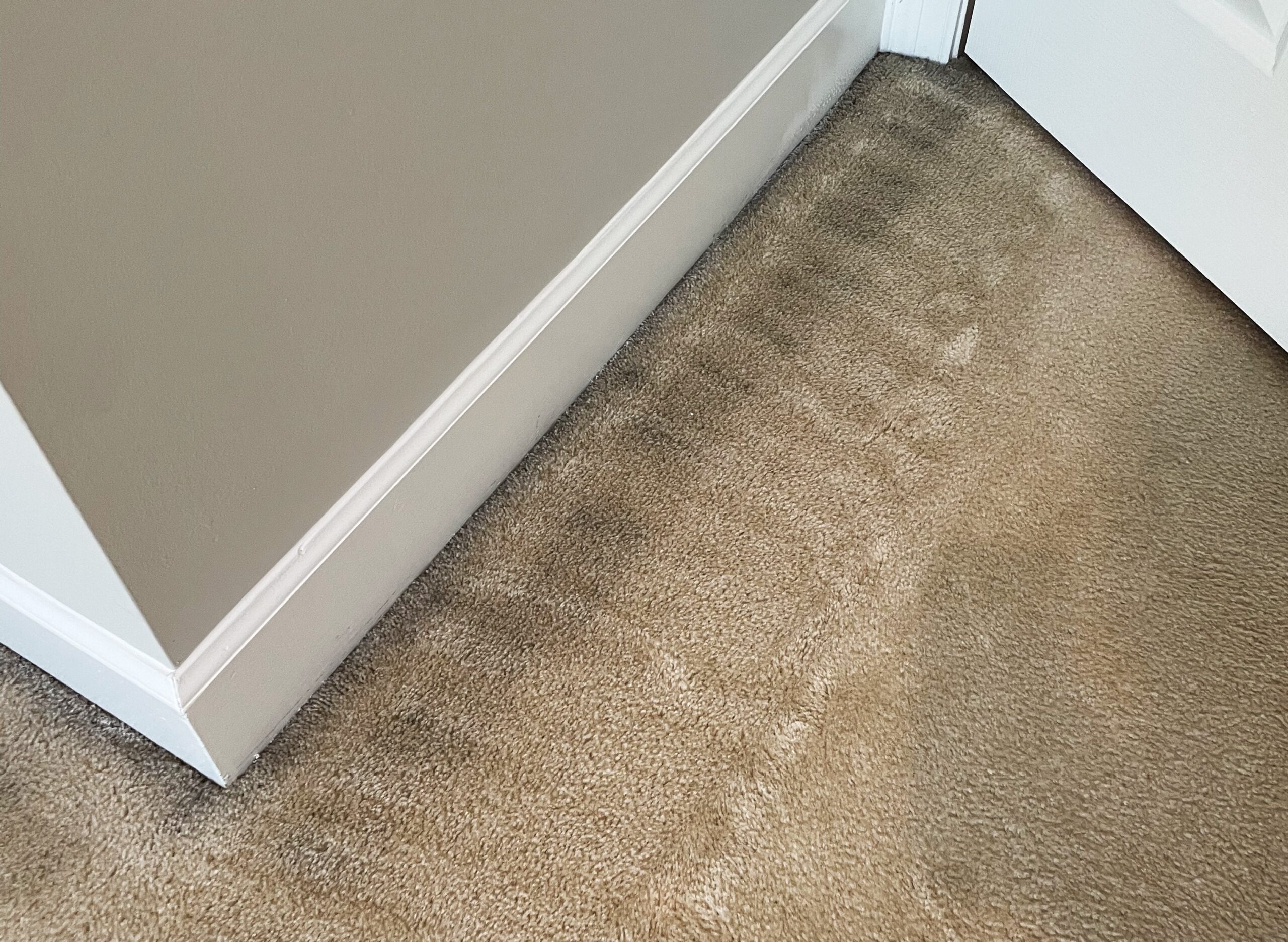 How To Address Filtration Soiling
How To Address Filtration Soiling
When a carpet is stained by filtration soiling it can be difficult to clean. The filtered particles are extremely fine and thus end up firmly embedded in the fibers of the carpet. Can the discoloration be minimized? Yes, but this condition is best addressed by professional carpet cleaners. With special products, time and effort, reasonable results can often be achieved.
After a Professional Cleaning, Prevention is Key
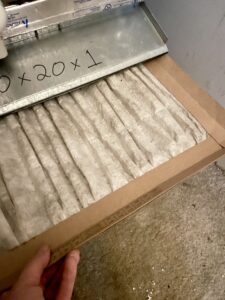
To help prevent a return of filtration soiling, wipe the edges of your carpeting on a regular basis and use the narrow crevice tool on your vacuum to get into those tight spaces near the walls. Be careful around the tackstrip on the edge of the carpeting – it can nick your fingers!
It also helps to keep your ducts clean. As the air is forced through your home’s ventilation system, it picks up whatever dirt is in the ducts, and carries that into the living areas of the home. Experts advise that having ducts cleaned regularly is one of the best ways of preventing soil from building up in your carpet.
Lastly, be sure to replace your HVAC filter regularly, as recommended by the manufacturer (some last longer than others). The filter traps a good portion of airborne pollutants.
Ready To Schedule a Professional Cleaning?
If you have a case of filtration soiling, Pro-Care can help. As the premiere carpet-cleaning specialist in Middle Tennessee, we have the know-how to clean you carpet without causing further damage. If you have questions about carpet care or any of the home care services we offer, contact us today.
